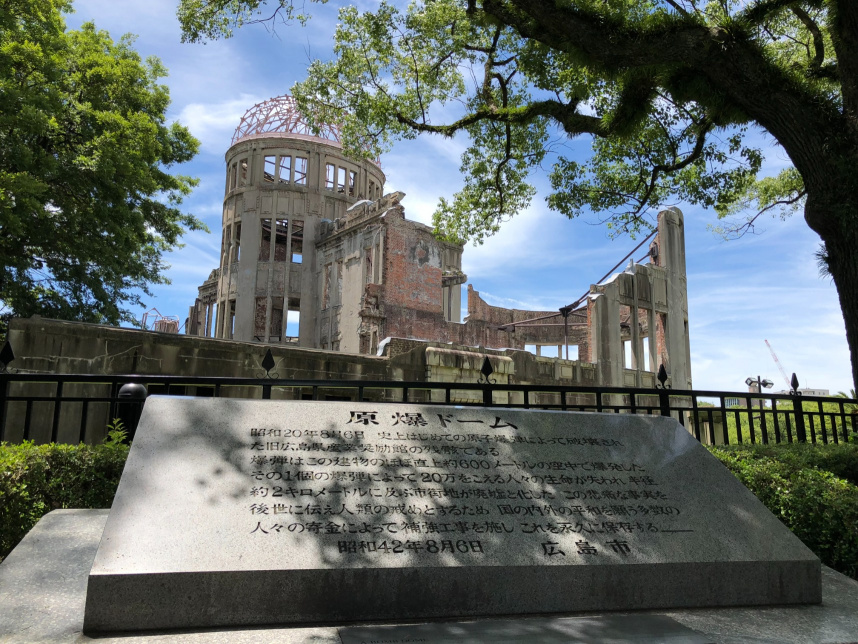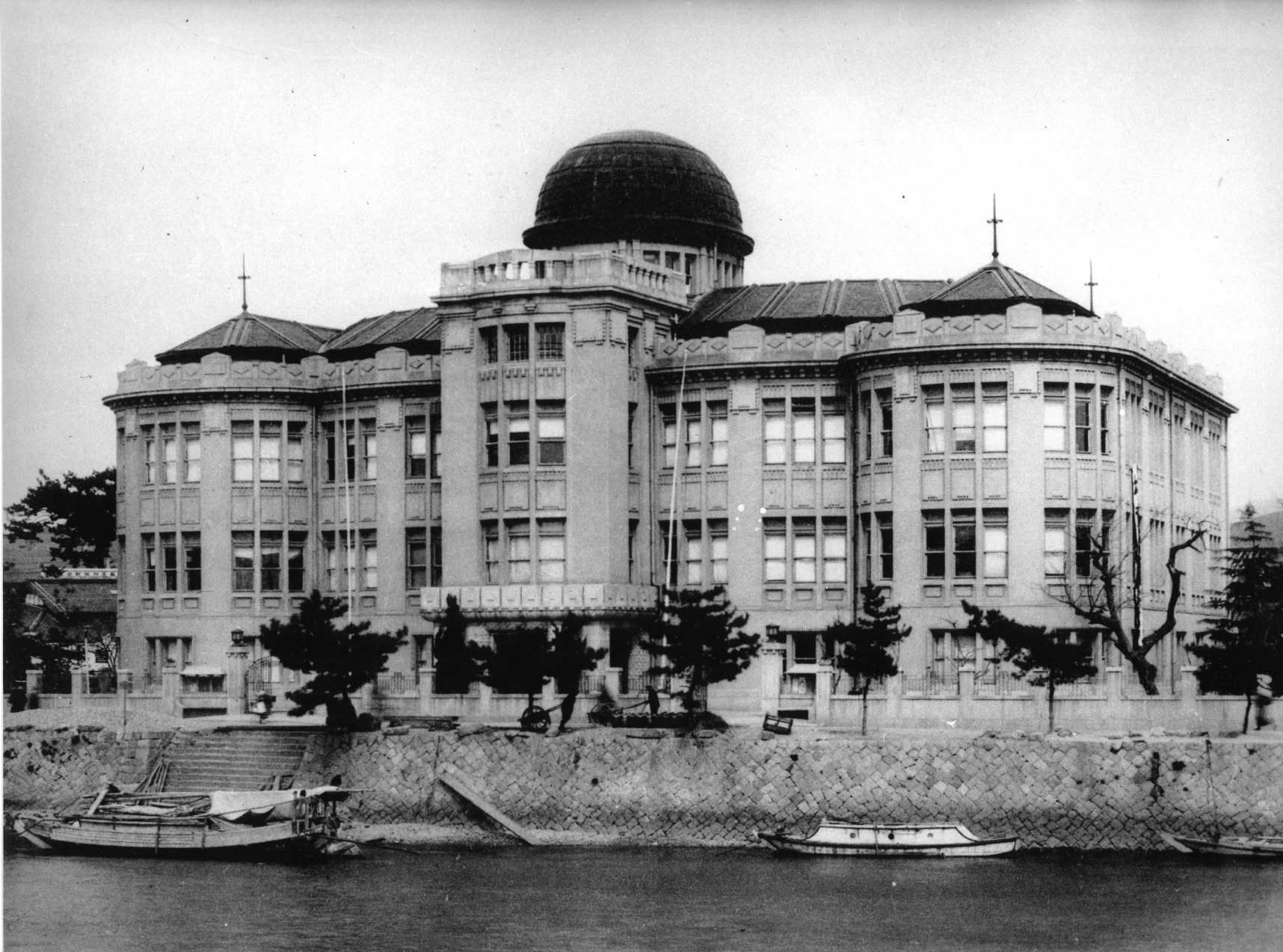-

-
The Atomic Bomb Dome

Completed in April 1915, the Hiroshima Prefectural Commerce Exhibition Hall was an architectural masterpiece of brick and partially-reinforced steel designed by Czech architect Jan Letzel, adorned with a magnificent oval-shaped copper dome. Renowned for its European design, the Exhibition Hall quickly became a Hiroshima landmark used for displaying and selling local goods, art exhibitions, expositions, and more.
At 8:15 am on August 6, 1945, a single atomic bomb instantly rendered the buildings in downtown Hiroshima to rubble and ash. The Hiroshima Prefectural Industrial Hall, a mere 160 meters from the hypocenter, was severely impacted by both the initial blast and heat rays, concentrated, high-powered rays of thermal energy, which melted the copper covering the dome and set the entire roof ablaze.
After the end of WWII, the dome, now merely a skeleton of bare steel framework, came to be called the Atomic Bomb Dome, a name born of the citizens of Hiroshima. Residents appealed for the preservation of the Dome as a raw example of the sheer destructive power and horror of nuclear weapons, and in 1967, their voices were heard and preservation of the Dome began.
At the December 1996 UNESCO World Heritage Committee Meeting in Mérida, Mexico, the Atomic Bomb Dome became an official World Heritage Site.
Information
The Atomic Bomb Dome
-
- Address
- 1-10 Ote-machi, Naka-ku, Hiroshima City
-
- Access
- Streetcar: Take the the 2 or 6 streetcar line headed for Miyajima-guchi (宮島口) or for Eba (江波), respectively, and get off at Genbaku Dome-mae (原爆ドーム前).
Bus: Take the Maple Loop Sightseeing Bus to the Atomic Bomb Dome stop.
-
- Fee
- Admission is free.
-
- Surrounding Info
-
- MAP
- Tap the name of the facility on Google Map and tap "View on Google Maps" to launch the application.

